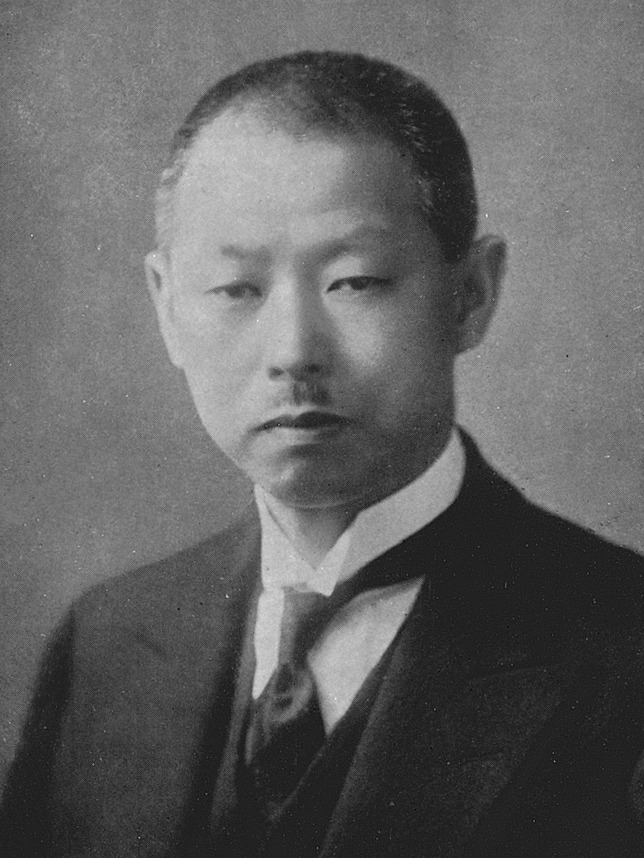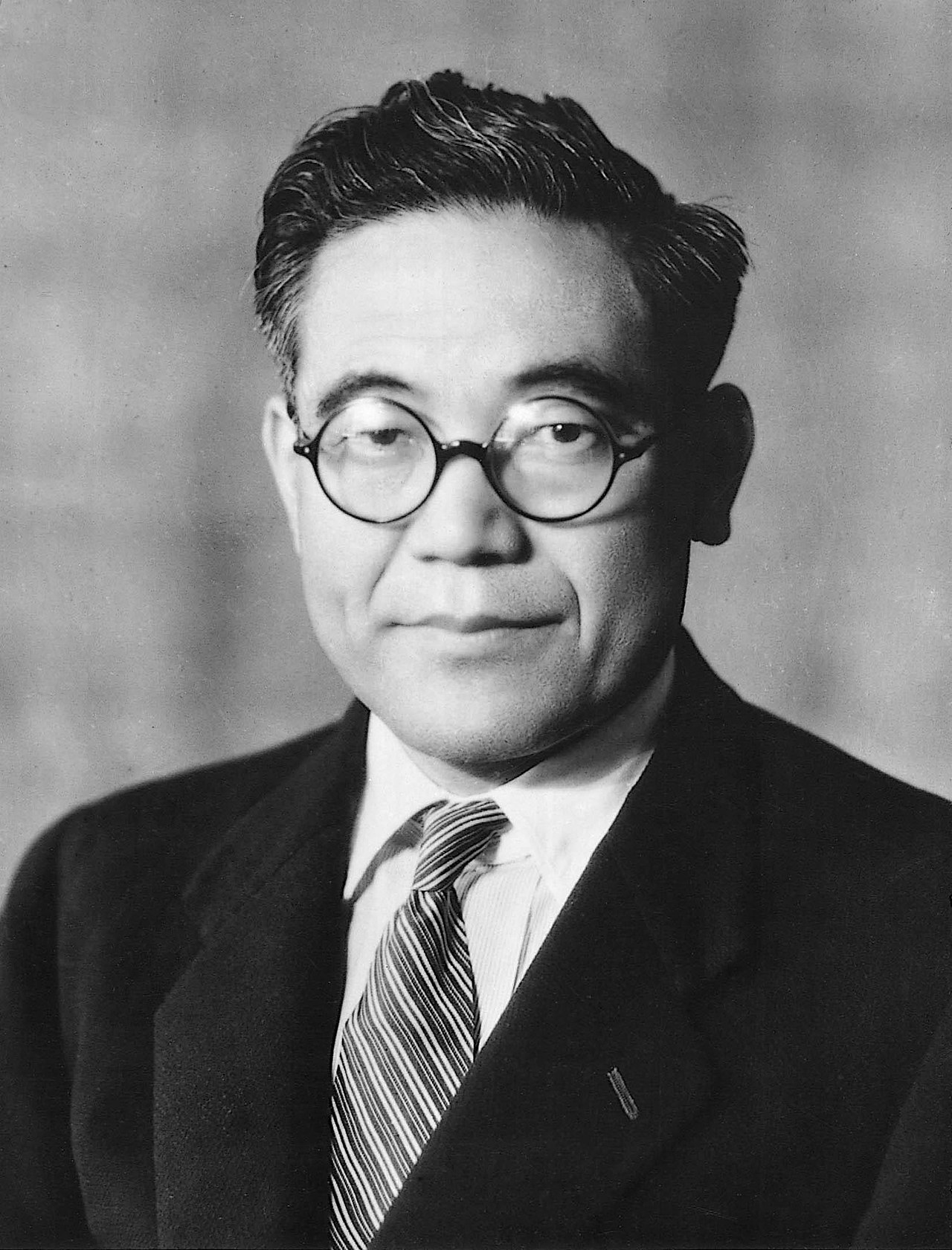Japan is home to one of the leading and most well-known automotive industries in the world. If you think of the most recognizable products from Japan, most probably you will have “cars” in your list. Japans’ big three: Toyota, Honda, and Nissan are always on the annual top 10 spots of the largest carmakers in the world. From the 1970s to 1990s, Japan’s automotive production rapidly increased, both for domestic use and worldwide exports.
Japanese carmakers are known worldwide for producing reliable cars with a high-tech brand image and well-executed details. Autos from Japan are generally lighter yet tough and has low malfunction rate, making them gain millions of buyers supporting their brands.
As it turns out, Japanese carmakers were known back then for their practice of ripping off car designs from other manufacturers before they became the standard for quality. Back then, it was also hard to envision that Japan would someday be the world’s leader in the automotive world, with Toyota almost getting bankrupt in 1949. But Japanese carmakers played well with their strengths: focus, consistency, and detail oriented engineering. They borrowed the best ideas from other countries, while also addressing their problems and weaknesses – making improved and better-than-ever models.
Let’s get to know the founders of the Japanese automobile industry who started it all:
1. Torakusu Yamaha and Yamaha Motor Company
Yamaha’s contribution to the Japanese automobile industry began with building a bus made with Japanese equipment in 1904, accommodating ten passengers. This venture marked one of the earliest steps in Japan’s journey toward automotive innovation. Torakusu Yamaha, along with Komanosuke Uchiyama, laid the early foundations for the Japanese automobile industry. While Yamaha started as a maker of musical instruments, later on it diversified and created a separate entity, Yamaha Motor Corporation.
These figures were instrumental in the early days of Japan’s automobile industry, each contributing in unique ways to the development of a sector that would eventually become a global powerhouse. Their innovations, determination, and vision paved the way for the modern success of Japanese automotive manufacturing.
Image: Torakusu Yamaha (1851-1916)
2. Komanosuke Uchiyama
Uchiyama, an engineer from Toyo Motor Vehicle Works, built the Takuri in 1907, the first Japanese-made gasoline-powered automobile. This vehicle was a significant milestone, marking Japan’s entry into automotive manufacturing. Uchiyama’s pioneering efforts laid the groundwork for the future success of the Japanese automobile industry.
3. Masujiro Hashimoto and Nissan
One of the pioneers who had a significant influence on the establishment of Japan’s automotive industry was Masujiro Hashimoto. He was the founder of Kaishinsha Jidosha Koto (Kwaishinsha Motor Car Works), which is the forerunner of today’s Nissan Motors.
Before Hashimoto established his motor car company, ventures to produce vehicles in Japan were unsuccessful due to the country’s underdeveloped industrial technology and unsuitable conditions for starting an all-around automotive company; and Kwaishinsha Motor Car Works was one of the few that succeeded. Back then, Hashimoto was a mechanical engineer sent by Japan’s Ministry of Agriculture and Commerce to study manufacturing in the United States. For three years, he worked for a manufacturer of steam engines in New York. When he came back to Japan, he had jobs related to machine gun manufacturing, electrical engineering, and coal mining equipment design.
It was in 1911 when Hashimoto formed Kwaishinsha Motor Car Works in the Azabu-Hiroo district of Tokyo. It produced its first car in 1914 and named it DAT-31, a 10-hp passenger car. DAT is an acronym of the main investor’s surnames: Kenjiro Den, a business manager; Rokuro Aoyama, Hashimoto’s childhood friend; and Meitaro Takeuchi, a well-connected financier. In 1916, the company introduced DAT 41, their first best-seller that won a gold award at the Peace Commemoration Tokyo Exposition in 1922. In 1918, the company was renamed to DAT Jidosha & Co., Ltd, and named their cars Datsun, an affectionate nickname for DAT.
However, the company suffered from a lot of problems because business was constantly slow. One of their fatal blows included the rapid increase of US vehicles in 1925 after the Great Kanto Earthquake in 1923. Hashimoto was squeezed out in a reorganization in 1931, and almost nothing is known about his life after leaving the firm. In 1933, DAT merged with Nihon Sangyo’s Tobata Casting. Nihon Sangyo was later on simplified as Nissan, but at the time it has been using Ni-San as a symbol on the Japanese stock exchange. DAT’s merger with Tobata Casting paved the way for the beginning of automobile manufacturing by Nissan.
4. Junya Toyokawa and the Hakuyosha Company
Junya Toyokawa is an engineer who established the Hakuyosha Company, a manufacturer of machine tools. The Hayukosha Company is one of the successful businesses that emerged in the early automotive history of Japan, besides Kwaishinsha Motor Car Works.
The company built two domestic vehicles named Ales in 1921. Ales are two experimental touring cars – one was powered by a by a water-cooled, four-cylinder side-valve engine displacing 1610 cc, the other an air-cooled four-cylinder engine producing 780 cc. The Ales were exhibited at the Peace Commemoration Tokyo Exposition and won a silver award.
From 1924 to 1927, the Hakuyosha Company built the commercially successful Otomo. Otomo is an air-cooled 944 cc four-cylinder light car, available as two- or four-seater sedan or as a van. Production ended in 1928 and the Hayukosha Company ultimately closed due to the increase in the assembly production of US vehicles.
5. Yataro Iwasaki and Mitsubishi
Born to a family shamed with debts, Yataro Iwasaki became a bold and ambitious entrepreneur who founded the Mitsubishi Company in 1870. The company was first established as a shipping firm, but today, it’s a conglomerate industry that owns the entities such as the Mitsubishi Bank, the Mitsubishi Corporation and the Mitsubishi Heavy Industries, which includes the famous Mitsubishi Motors.
Yataro was a visionary leader who foresaw the potential of motorized vehicles and the role they would play in Japan’s economic development. Mitsubishi Model A, Mitsubishi’s first car and Japan’s first mass-produced production car, was launched in 1917. It was a brainchild of Yataro, although he never saw it since he already died 32 years before it was produced. The Mitsubishi Model A was a four-door, seven seater sedan with a town car body style. It is powered by a 35 hp, 2.8-litre, straight-4 engine, and is capable of speeds up to 60 mph.
6. William Reagan Gorham
William Reagan Gorham is an American automobile engineer who migrated to Japan and made considerable contributions to the technology of Japan’s automobile industry. He was known for building a three-wheeled motor vehicle called the Gorham and a four-wheeled auto called Lila in 1920, under the employment as chief designer for Gonshiro Kubota’s Kubota Corporation, which would eventually be merged into a predecessor of Nissan Motor Company.
Gorham and Kubota, along with other Japanese investors, established Jitsuyo Jidōsha Seizo, the firm that would later manufacture Gorham’s creations. In 1926, DAT Motors merged with Jitsuyo Jidōsha Seizo, forming DAT Jidosha Seizo Co., Ltd. DAT inherited Gorham as their chief designer. When DAT Jidosha Seizo became affiliated with Tobata Castings (a Nihon Sangyo or Nissan brand), Gorham greatly affected Nissan’s future. It was him who carried out the plans of Nihon Sangyo’s founder Yoshisuke Aikawa to use cutting-edge auto making technology from the US. Gorham was referred to as the founder of Nissan Motor Company in terms of technology.
7. Yoshisuke Aikawa and Nissan
Yoshisuke Aikawa is the founder of Nihon Sangyo, which is now known as the Nissan Motor Company. Established in 1928, Nihon Sangyo was a holding company that took over the operations for manufacturing Datsuns, the Japanese brand of automobiles that marked the rapid advances of modern industrialization in Japan. Datsun passenger cars were produced by DAT Jidosha Seize Co., Ltd, which merged with Nihon Sangyo.
Aikawa may not be the man who improved Datsuns, his modern style of leadership put the Datsuns and Nissan in the world automotive industry map. He avoided naming the company after him or his family, which was a typical practice in Japanese businesses because they were feudal in nature. He made the company public and placed people with engineering backgrounds in top positions, not his family members. He had plans to mass-produce 10,000 to 15,000 units annually and was able to put that into practice. Back then, mass producing that number of cars were a big deal.
8. Kiichiro Toyoda and Toyota
The son of the famous Japanese inventor and Toyoda Industries Corporation founder Sakichi Toyoda, Kiichiro Toyoda was the founder of Toyota Motor Corporation, the largest automobile manufacturer in the world. Kiichiro worked at a leading manufacturer of textile machinery in England and studied manufacturing techniques in the United States. He returned to Japan and worked at his father’s loom-making business, where he engineered improvements to the high-draft spinning frames of the loom, and patented a carding machine.
When his father had died, his brother-in-law Risaburo Toyoda became the new president of Toyoda Industries. Kiichiro convinced Risaburo to fund research in auto-making and manufacturing, however risky the automobile business is at the time. Kiichiro then bought a new Chevrolet and hired some of Japan’s top engineers to disassemble and reassemble it. In 1934, Toyoda designed their first gasoline-powered engine and persuaded investors to fully fund Toyoda Industries’ automotive division. Toyoda’s first car, Model A1, was built combining Japanese parts with Ford and Chevy components under a Chrysler body. The 1936 Model AA passenger car was based on the Chrysler Airflow. Toyoda (which was changed eventually to Toyota) was known for ripping off designs from other manufacturers until it was known as a reliable, innovative carmaker today.
9. Soichiro Honda and Honda
Soichiro Honda, born on November 17, 1906, in Shizuoka Prefecture, Japan, was the visionary founder of Honda Motor Company, Ltd. Honda’s journey began as a mechanic in Tokyo at the age of 15, and by his early twenties, he had opened his own repair shop in Hamamatsu. His passion for motors led him to build and drive race cars. Before World War II, he perfected a piston ring design, which later became a critical component in his business endeavors.
Post-war, Honda reconnected with his friend Takeo Fujisawa and in 1949, he hired Fujisawa to oversee the financial side of Honda Motor Company. This partnership was instrumental in Honda’s expansion, leading to the opening of its first dealership in the United States in 1959. Under Honda’s leadership, the company became a multinational corporation, producing the world’s best-selling motorcycles. Honda remained president until 1973, continuing to influence the company as director and later as “supreme advisor.” He was an accomplished pilot, skier, golfer, car racer, hang glider, and artist. Honda passed away on August 5, 1991, leaving behind a legacy of innovation and determination.
10. Jujiro Matsuda and Mazda
Jujiro Matsuda, the founder of Mazda Motor Corporation, established the company in 1920. Known for his focus on innovative engineering, Matsuda led Mazda to develop unique automotive technologies, including the rotary engine, which became a significant differentiator for the company. Mazda under Matsuda’s leadership was known for blending style, performance, and efficiency in their vehicles. His vision and leadership helped position Mazda as a prominent player in Japan’s automotive industry, renowned for elegant designs and advanced technology.
11. Michio Suzuki and Suzuki Motor Corporation
Michio Suzuki, born on February 18, 1887, in Shizuoka Prefecture, Japan, was the founder of Suzuki Motor Corporation. Initially, Suzuki worked on his family’s silkworm farm and then transitioned into the manufacture of looms. His first significant innovation was a pedal-driven loom, which brought efficiency to the weaving process. Suzuki founded Suzuki Loom Manufacturing Company in 1909, focusing on loom technology, which gained international recognition with the development of a punchcard loom exported across Southeast Asia.
However, Suzuki’s ambitions extended beyond looms. In the mid-1930s, he began exploring automotive technology and designed a prototype automobile in 1936. Post-World War II, Suzuki capitalized on the Japanese economic miracle to resume his work in motorized transportation. In 1952, Suzuki Corporation launched its first motorized vehicle, the “power-free,” a motor-assisted bicycle. The company then introduced its first car, the Suzulight, in 1955, which was ahead of its time in terms of technical innovations, including double-wishbone coil-sprung suspension and rack-and-pinion steering. Suzuki stepped down as president in 1957 but remained involved as a member of the Board of Advisors until his death in 1982.
12. Kenji Kita and Subaru Corporation
Kenji Kita was the founder of Subaru Corporation, part of the larger conglomerate Fuji Heavy Industries. Subaru is renowned for its all-wheel-drive technology and boxer engines. Subaru vehicles are known for their reliability and performance. However, the specific details of Kita’s life and contributions to Subaru and the automotive industry are not as extensively documented in available sources as other founders.ru Corporation, part of Fuji Heavy Industries, is renowned for its innovative all-wheel drive technology and boxer engine designs. Kita’s foresight has made Subaru a prominent name in the automotive industry.
13. Shozo Kawasaki and Kawasaki Motors Corporation
Shozo Kawasaki founded Kawasaki Motors Corporation in 1949. Initially part of Kawasaki Heavy Industries’ shipbuilding division, the company’s first product was a motorcycle, the K1, released in 1950. Kawasaki quickly became one of Japan’s leading motorcycle manufacturers, and by the 1960s, it was exporting its products to other countries. Kawasaki’s contributions played a significant role in establishing Japan as a major player in the global motorcycle market.
Interesting Facts About the Founders
- Masujiro Hashimoto: Founded Kwaishinsha Motor Car Works, which later became Nissan. He faced significant challenges, including competition from US vehicles, which eventually led to his exit from the company.
- Junya Toyokawa: Established Hakuyosha Company, which built the Otomo, one of the earliest Japanese cars. The company eventually closed due to the dominance of US vehicle assembly production.
- Yataro Iwasaki: Although he founded Mitsubishi as a shipping firm, his vision extended to motorized vehicles, leading to the creation of Mitsubishi Motors after his time.
- William Reagan Gorham: An American engineer whose technology and designs significantly influenced the early Nissan vehicles and played a pivotal role in Nissan’s development.
- Yoshisuke Aikawa: Founder of Nihon Sangyo, later Nissan, Aikawa was instrumental in the early industrialization and modernization of Japan’s automobile manufacturing.
- Kiichiro Toyoda: He transformed Toyota from a division of Toyoda Loom Works into a global automotive leader. His innovative approach revolutionized Toyota’s production and business model.
- Soichiro Honda: Started as an apprentice mechanic and went on to create Honda Motor Co., Ltd, a company renowned for its technological innovation and reliability in automobiles and motorcycles.
- Jujiro Matsuda: The founder of Mazda, known for innovative engineering and the popularization of the rotary engine.
- Michio Suzuki: Initially focused on weaving loom manufacturing, Suzuki later transitioned to automotive manufacturing, significantly impacting the Kei car market.
- Kenji Kita: The founder of Subaru, known for its all-wheel-drive technology and boxer engines, was part of the larger Fuji Heavy Industries.
- Shozo Kawasaki: Founded Kawasaki Motors Corporation, initially focusing on motorcycles and later becoming a leading name in the automotive industry.
- Torakusu Yamaha: Originally founded a musical instrument manufacturer, Yamaha Corporation, and later established Yamaha Motor, known for motorcycles and small engines.
Interesting Facts About the Companies
- Nissan: Originated from Kwaishinsha Motor Car Works and became a global automobile manufacturer with a rich history of innovation and a broad range of vehicles.
- Mitsubishi Motors: Part of the larger Mitsubishi conglomerate, this company has a history of over a century in the automobile industry and is known for its high-tech and diverse range of vehicles.
- Toyota: World’s largest automobile manufacturer, Toyota is known for the Toyota Production System, a revolutionary manufacturing method that emphasizes efficiency and quality.
- Honda: Renowned for its motorcycles as well as cars, Honda has a significant impact on both the automobile and motorcycle industries with its innovative technologies.
- Mazda: Known for its elegant designs and innovative engineering, particularly the development and use of the rotary engine.
- Suzuki: Has a significant presence in the Kei car market and is known for its compact, efficient vehicles.
- Subaru: Famous for its symmetrical all-wheel-drive system and boxer engines, Subaru is a part of Fuji Heavy Industries and is known for its reliable and high-performance vehicles.
- Kawasaki: Initially a motorcycle manufacturer, Kawasaki expanded into the automotive sector, becoming famous for its high-quality and innovative vehicles.
- Yamaha Motor: Originating from a musical instrument manufacturer, Yamaha Motor is now a leading name in motorcycles and small engine vehicles.
Conclusion
These founders, through their resilience and innovative spirit, have not only shaped the Japanese automobile industry but have also left an indelible mark on the global automotive landscape. Their legacy continues to influence current and future generations of vehicles and automotive technology, making the story of Japan’s automotive pioneers a truly inspiring chapter in the history of transportation.






